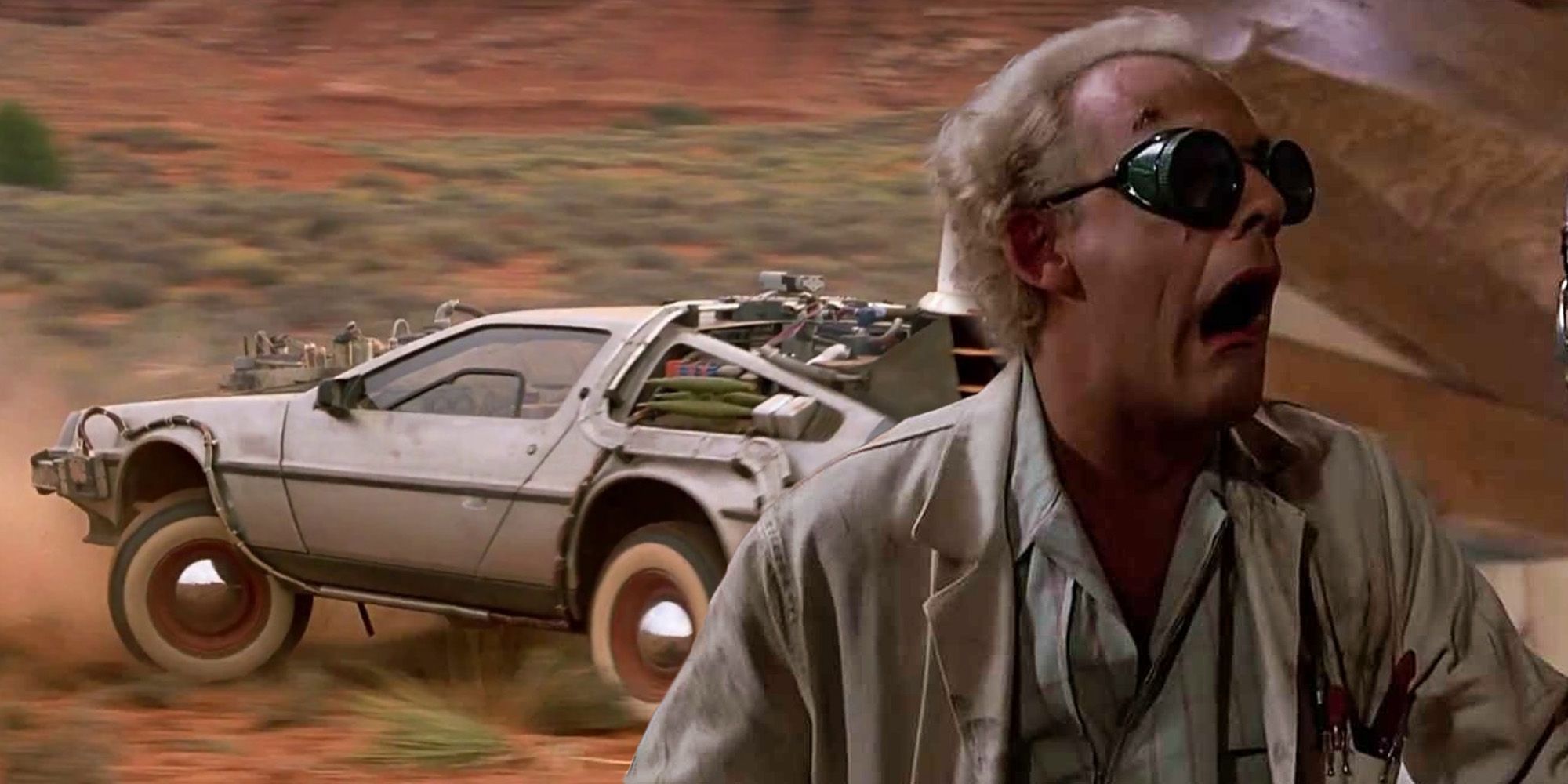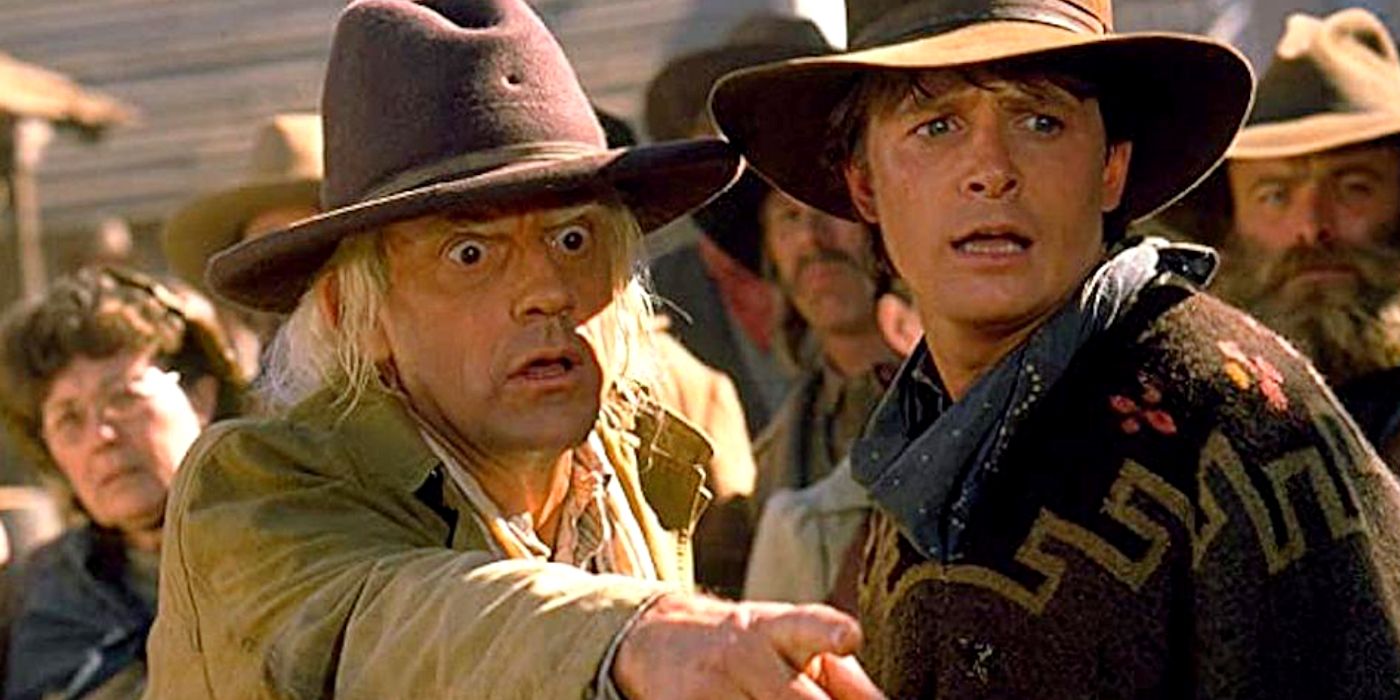
The classic Back to the Future trilogy is riddled with countless plot holes, but the question of why Doc Brown can’t create gasoline in Back to the Future Part III does actually have an answer. Beginning with Back to the Future, a sleeper hit upon release in 1985, Robert Zemeckis’ Back to the Future trilogy is a critically adored trio of sci-fi comedy adventures starring Michael J. Fox and the inimitable Christopher Lloyd as Doc Brown and Marty McFly.
After the first film saw Doc and Marty travel back to 1985 and the second saw them flung into the faraway future of… 2015, there was apparently nowhere for the Back to the Future franchise to head except the Wild West. The most overtly comedic entry in the franchise, 1990’s Back to the Future Part III offered a satisfying end to the series and a fun Western adventure in one movie and remains well-liked by fans of the franchise.
However, like any sci-fi film that sends its heroes traveling through time, there are plenty of plot holes that eager fans can poke in Back to the Future’s convoluted timeline. For one thing, the sequel’s back-and-forth time-traveling makes about as much sense as the plot mechanics of Bill & Ted’s Excellent Adventure. But there are also more subtle questions that do have answers, such as the question of why a scientist as accomplished as Doc Brown can’t synthesize his own gasoline in Back to the Future III. In storytelling terms, this contrivance serves as a handy way to strand Doc in 1885, but the seeming plot hole does actually have a reasonable explanation for fans who demand to know.

The answer is likely disappointingly realistic for a series as zany as the Back to the Future movies, but it’s one that reminds fans that the trilogy isn’t entirely over-the-top and divorced from reality. Unlike, say, Rick Sanchez of Rick & Morty, Doc Brown isn’t depicted in the Back to the Future movies as a Renaissance polymath with a natural understanding of a wide range of subjects and an academic mastery of many more. Instead, Doc is a more recognizable sort of genius, an obsessive who achieved something extraordinary through innovation and endless study. As a result, it’s reasonable that a doctor of physics wouldn’t necessarily have the chemistry expertise necessary to make gasoline from scratch.
After all, the gasoline that Doc synthesized from raw materials available in the wild West would need to be both strong enough and pure enough to run not only in a modern car but in a car souped-up for time travel. Viewers can reasonably assume that the DeLorean has pretty specific requirements for smooth time travel, and hastily cobbled together gasoline made by a man who isn’t primarily an experienced chemist is unlikely to pass the test. As mentioned earlier, it's pretty bizarre that the Back to the Future series picked this one detail to portray realistically after three movies worth of goofy "Hollywood science," but the answer is nonetheless hard to dispute.
from ScreenRant - Feed https://ift.tt/2LL8mNm


0 Comments